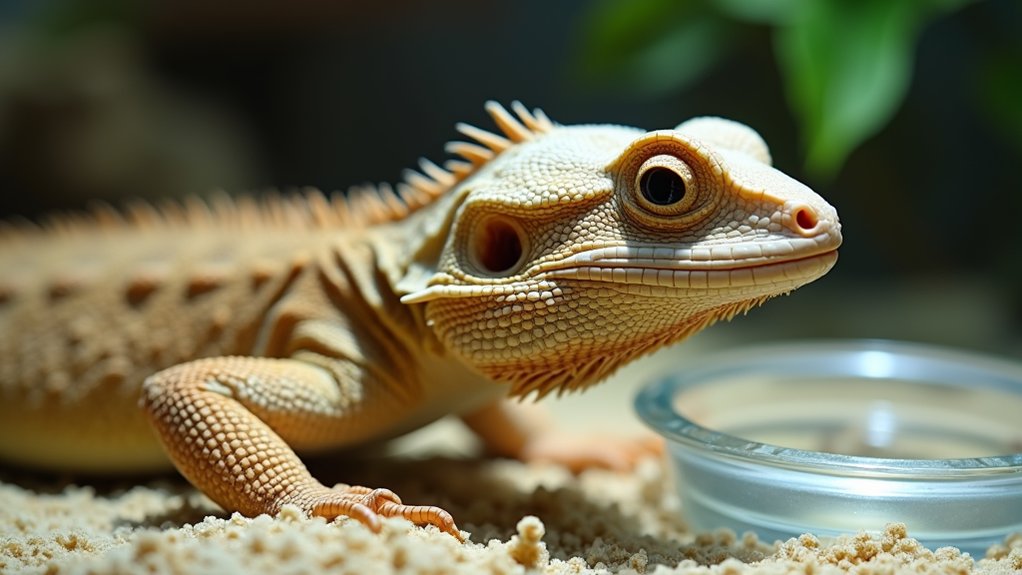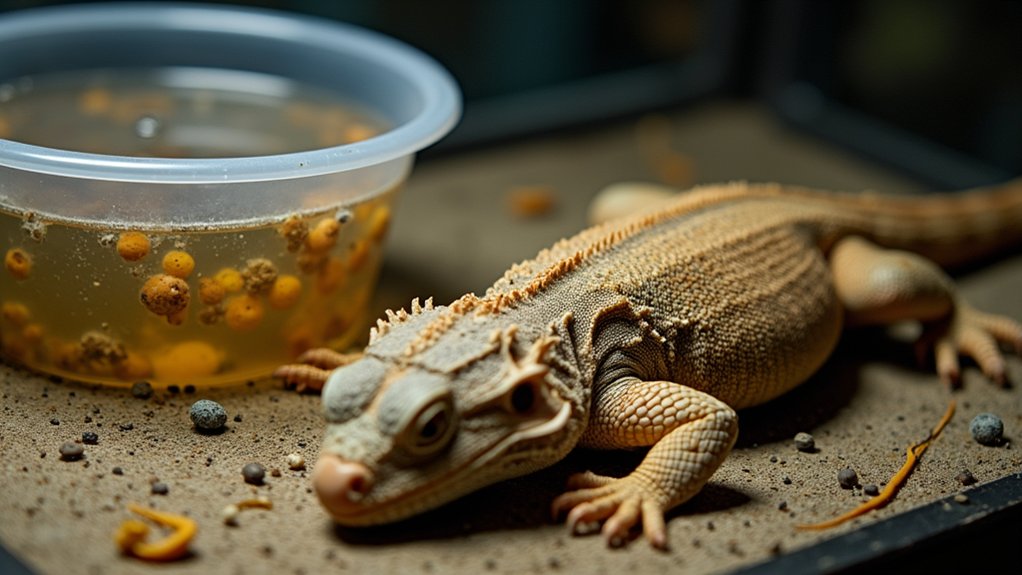Cryptosporidium affects reptiles primarily via fecal-oral transmission, with resilient oocysts contaminating environments. Studies show prevalence rates of 7.3-24.2% in captive specimens, with C. serpentis being most common. Clinical signs include regurgitation, weight loss, and hypertrophic gastritis. Treatment options remain limited, with paromomycin offering only temporary relief; prevention through quarantine protocols and PCR screening is essential. The challenging nature of this parasite necessitates understanding its complete pathophysiology for effective management strategies.

Transmission occurs primarily through the fecal-oral route, with resilient oocysts contaminating environments, equipment, and potentially prey items like feeder mice. These microscopic cysts, measuring merely 4-8 nanometers, demonstrate remarkable resistance to conventional disinfectants, necessitating strong ammonia solutions for effective elimination from captive habitats.
Cryptosporidium's resilient oocysts survive on surfaces and prey, requiring concentrated ammonia solutions for elimination in captive environments.
The persistent nature of these oocysts, coupled with the possibility of self-reinfection within a single host, creates a particularly challenging disease management scenario in reptile collections, where prevalence rates of 7.3% have been documented in pet snakes. Molecular diagnostic techniques like nested PCR analysis have demonstrated significantly higher detection rates of 24.2% compared to traditional staining methods. Cryptosporidium serpentis is the most common species affecting captive reptiles.
Clinical presentations typically include gastrointestinal distress, characterized by weight loss, diarrhea containing undigested food, and in snakes, frequent regurgitation of partially digested prey. As infections progress, hypertrophic gastritis develops, particularly in chronically affected snakes, often leading to lethargy, anorexia, and ultimately, death in severe or untreated cases.
Diagnostic challenges persist due to intermittent shedding patterns and the microscopic size of oocysts, making PCR-based detection methods preferable to traditional microscopy.
Treatment options remain severely limited, with paromomycin offering temporary symptom relief but failing to eliminate infections completely. The absence of FDA-approved therapeutics for reptilian cryptosporidiosis often leads veterinarians to recommend euthanasia for infected specimens, underscoring the critical importance of preventive measures including rigorous quarantine protocols, thorough PCR screening prior to introduction, and meticulous hygiene practices within reptile collections.
Frequently Asked Questions
How Do Reptiles Become Infected With Cryptosporidium?
Reptiles acquire Cryptosporidium primarily through fecal-oral transmission, ingesting environmental cysts from contaminated substrates or enclosure surfaces.
Additional infection routes include consumption of infected prey animals, exposure to contaminated tools or surfaces used across multiple enclosures, and possible vertical transmission during reproduction.
The remarkable environmental persistence of Cryptosporidium oocysts, which resist common disinfectants and remain viable for months in suitable conditions, facilitates continued transmission within reptile collections despite mitigation efforts.
Can Humans Catch Cryptosporidium From Pet Reptiles?
Humans can potentially acquire cryptosporidiosis from pet reptiles, though the risk is primarily indirect.
While reptile-specific species like C. serpentis and C. saurophilum are not zoonotic, reptiles may carry C. parvum, which can infect humans through environmental contamination rather than direct contact.
Transmission typically occurs via contact with contaminated surfaces, equipment, or when handling infected prey fed to reptiles.
Implementing proper hygiene protocols, quarantine procedures, and environmental disinfection greatly reduces this zoonotic risk.
What Symptoms Indicate Cryptosporidium Infection in Reptiles?
Cryptosporidium infection in reptiles manifests through several distinctive clinical signs, including persistent gastrointestinal disturbances like regurgitation, diarrhea with undigested food, and malodorous feces.
Affected animals typically exhibit progressive weight loss despite adequate feeding attempts, often developing anorexia and muscle wasting in advanced cases.
Behavioral indicators include lethargy, reduced activity levels, and mid-abdominal swelling, particularly in snakes.
Species-specific presentations vary, with geckos commonly showing foul-smelling diarrhea while snakes frequently demonstrate gastritis with regurgitation.
Are Certain Reptile Species More Susceptible to Cryptosporidium?
Evidence suggests differential susceptibility to cryptosporidial parasites exists among reptile species.
Corn snakes and king snakes exhibit notable vulnerability to *Cryptosporidium serpentis*, which causes severe gastric infections with high mortality rates.
Leopard geckos, Schneider's skinks, and monitor lizards mainly suffer from *C. saurophilum*, resulting in intestinal pathology.
Co-infection risks are elevated when housing multiple species together, with some reptiles, including corn snakes, demonstrating susceptibility to both parasites simultaneously, thereby functioning as potential reservoirs for cross-species transmission.
How Is Cryptosporidium in Reptiles Diagnosed and Treated?
Cryptosporidium in reptiles is diagnosed through PCR testing of fecal samples, which offers superior sensitivity compared to traditional acid-fast staining methods.
Multiple samples over several weeks are recommended due to intermittent oocyst shedding.
Endoscopic biopsies represent the gold standard for definitive diagnosis.
Treatment remains challenging, focusing primarily on supportive care, since no definitive cure exists.
Experimental antiparasitics show limited efficacy, while management emphasizes strict isolation protocols and environmental disinfection with 6% hydrogen peroxide to prevent transmission.









